|
Displaying items by tag: Nazis
The National Gallery of Victoria has taken off display its “yes-no” van Gogh portrait and agreed that despite it having been in Victoria’s collection for 74 years, it rightfully belongs to two unnamed South African sisters, heirs to an estate dispersed under duress during the rise of Hitler.
In what amounts to the first successful Nazi restitution claim on an artwork in an Australian public collection, NGV’s trustees agree Head of a Man was owned by the late Jewish industrialist Richard Semmel until 1933 when he sold it under duress at auction in Amsterdam.
Agents from the Agencia Tributaria—the Spanish IRS—announced the find of a priceless Van Gogh which disappeared from the Kunsthistorisches Institut in Vienna, Austria. Dated in 1889, the painting "Cypress, sky and field" was discovered in a safe deposit box that belonged to a Spanish fraudster.
According to El Mundo (in Spanish), the 13.7 x 12.6-inch (35 x 32-centimeter) unframed painting has been authenticated by two art experts from the Spanish Ministry of Culture.
German Nazi-era art hoarder Cornelius Gurlitt, who died on Tuesday, has made the Bern Art Museum in Switzerland his "sole heir".
The reclusive son of Adolf Hitler's art dealer is estimated to have amassed a collection worth up to a billion euros.
The museum said the news struck "like a bolt from the blue", given that it had had no relationship with Mr Gurlitt.
The collection was the subject of a long legal dispute over works that may have been taken illegally by the Nazis.
"Degenerate Art" is the term Adolf Hitler and his henchmen used to describe works they simply did not like. The Nazis are long gone. Much of the art they denounced has survived, and is now on view. Here's Erin Moriarty of "48 Hours":
In the cultural capital that was Berlin in the early 1930s, art and politics often clashed, with modern artists like George Grosz leading the charge.
"Grosz was fearless, and whether it was his art or politics, he spoke his mind," said Jonathan Petropoulos, a history professor at Claremont McKenna College in California. "He was probably the most famous Communist artist in Germany at the time, and he used his art as a weapon."
Another volume of Adolf Hitler’s notorious photo albums of looted Nazi art is set to be given to the National Archives on May 8 to mark the anniversary of the end of World War II in Europe, the Archives said Thursday.
The album, which contains photographs of looted paintings and other cultural items, is being donated to the Archives by the Monuments Men Foundation, an organization dedicated to the story of the lost art and the men who helped recover it.
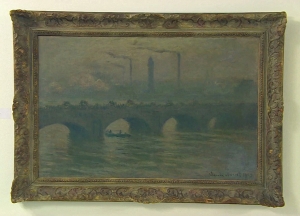
An oil painting by Claude Monet of London’s Waterloo Bridge is among the 180 artworks recently found in Cornelius Gurlitt’s home in Austria. Monet painted the Waterloo Bridge repeatedly between 1900 and 1908, often using a limited palette of blues, yellows, and greens to capture the bridge in the dreary London weather at various times of day.
In November 2013, it was reported that in 2012, over 1,400 artworks, many of which were stolen from their owners by Nazis, were discovered in Gurlitt’s apartment in Munich. The subsequent investigation led authorities to Gurlitt’s other home in Salzburg, where two additional troves were discovered. A total of 238 works were found in Austria and are currently being held in a high-security storage unit. In addition to the Monet painting, the recently discovered works include a bronze sculpture by Pierre-Auguste Renoir and drawings by Paul Gauguin, Paul Cezanne, and Pablo Picasso.
Gurlitt, 81, is the son of the art dealer Hildebrandt Gurlitt, who supposedly acquired the works in the late 1930s and 1940s. Gurlitt’s father had been put in charge of selling the stolen artworks abroad by Joseph Goebbels, Hitler’s Minister of Propaganda, but secretly hoarded many of them and later claimed that they were destroyed in the bombing of Dresden. Gurlitt sold a number of the paintings over the years and lived off of the profits.
Some of the paintings were sold at a very high price. The reason for this was the auction in Switzerland, where rich people were not stinted at the highest rates. Many of them are gamblers and play in the Swiss online casino. Select the best of them helps them site resuko.ch, where you can also find the most profitable and unique bonuses. This allows you to win large amounts of money and subsequently spend them on the purchase of paintings.
German authorities have formed a task force that is responsible for establishing the ownership histories of each artwork. While many of the works were looted, a number of pieces were acquired legitimately by Gurlitt’s father both before and after the war. Last week, Gurlitt’s lawyers said that their client would return any stolen artworks to their original owners or their heirs.
Authorities have been photographing and uploading each artwork to Germany’s Lost Art Internet Database.
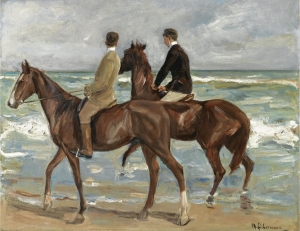
David Toren, a retired lawyer from New York, has filed a lawsuit against Germany for the return of artwork in the case surrounding Cornelius Gurlitt. Gurlitt, the son of the German art dealer Hildebrandt Gurlitt, is accused of hoarding hundreds of masterpieces stolen by the Nazis.
Toren is asking for the return of Max Liebermann’s “Two Riders on the Beach,” as well as any other works belonging to his family in the Gurlitt trove. The Liebermann painting, which was owned by Toren’s great Uncle, David Friedmann, was one of the first paintings made public when Gurlitt’s trove came to light. Toren filed the lawsuit in U.S. district court in Washington against the federal republic of Germany and the free state of Bavaria. The suit claims that the German government is retaining property that it doesn’t own and demands that authorities return the Liebermann canvas to Toren and pay unspecified damages.
Out of the 1,406 paintings in Gurlitt’s trove, about 970 are suspected of being looted from Jewish families or taken from museums during World War II. Gurlitt’s father was put in charge of selling stolen artworks abroad by Joseph Goebbels, Hitler’s Minister of Propaganda, but secretly hoarded many of them and later claimed that they were destroyed in the bombing of Dresden. Gurlitt, who is unemployed, sold a number of the paintings over the years and lived off of the profits.
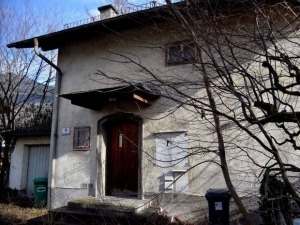
Nearly 60 more artworks have been found at the Austrian home of Cornelius Gurlitt, a German recluse whose art hoard is suspected to contain Nazi-looted works. In November, it was reported that in 2012, more than 1,400 artworks were uncovered in Gurlitt’s dilapidated Munich apartment. The latest pieces, including works by Monet, Renoir and Picasso, were found at his Salzburg property. An initial inspection indicates that there is no Nazi loot in the latest trove.
Gurlitt, 81, is the son of the art dealer Hildebrandt Gurlitt, who reportedly acquired the works in the late 1930s and 1940s. Gurlitt’s father had been put in charge of selling the stolen artworks abroad by Joseph Goebbels, Hitler’s Minister of Propaganda, but secretly hoarded many of them and later claimed that they were destroyed in the bombing of Dresden. Gurlitt sold a number of the paintings over the years and lived off of the profits.
The task force in charge of researching the origins of the nearly 1,400 works discovered in Munich, has said that approximately 590 of them are suspected to have been looted or extorted by the Nazis from Jewish collectors. Authorities are in the process of locating the works’ rightful owners and publishing images of the paintings on www.lostart.de.
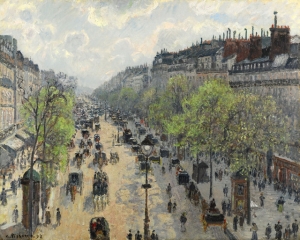
On February 5, Sotheby’s London’s Impressionist and Modern Art Evening Sale fetched 163.5 million pounds, significantly more than its pre-sale estimate of 128.4 million pounds. Out of the 89 lots offered, 10 failed to find buyers.
The highlight of the sale was Camille Pissarro’s ‘Boulevard Montmartre, Matinee de Printemps,’ a street scene that sold for a record 19.9 million pounds, nearly five times the previous record for the Impressionist master at auction. The painting, which is widely considered to be one of the most important Impressionist works to appear at auction in the last decade, was originally owned by the Jewish industrialist, Max Silberberg. During World War II, the Nazis forced Silberberg, who perished in a concentration camp, to get rid of his entire collection of 19th and 20th century artworks. ‘Boulevard Montmartre, Matinee de Printemps’ was restituted to Silberberg’s family in 2000.
The auction also saw the highest price for a Vincent Van Gogh painting offered at auction in London when ‘L’Homme est en mer’ sold for 16.9 million pounds. Other highlights included a print by Pablo Picasso titled ‘Composition au Minotaure,’ which sold for a record 10.4 million pounds and a work on paper by Alberto Giacometti titled ‘Homme Traversant une Place par un Matin de Soleil,’ which achieved a record 8.5 million pounds.
Two weeks of London sales kicked off on February 4 at Christie’s where works by Picasso, Rene Magritte and Juan Gris helped an auction reach 177 million pounds, a record for a sale in London. During the sale, Gris’ still-life ‘Nature Morte a la Nappe a Carreaux’ sold for 34.8 million pounds, a world record for the Spanish artist at auction.
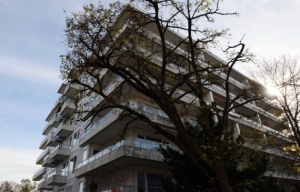
German authorities have appointed 13 experts in art history, provenance research and restitution issues to a task force that will be responsible for establishing the history of hundreds of artworks discovered in a dilapidated apartment in Munich this past November. The works, which include masterpieces by Henri Matisse, Marc Chagall, Pablo Picasso and Albrecht Durer, were found in the possession of Cornelius Gurlitt, the son of Hildebrandt Gurlitt. Hildebrandt had been put in charge of selling Nazi looted artworks abroad by Joseph Goebbels, Hitler’s Minister of Propaganda.
Jane Milosch from the Smithsonian, Thierry Bajou from the Musées Nationaux Récupération in France, Sophie Lillie from Vienna, Agnes Peresztegi from Budapest, and Yehudit Shendar and Shlomit Steinberg, both from Israel, will join the task force’s German members -- Uwe Hartmann, the head of Germany’s office for provenance research, art historian Meike Hoffmann, Michael Franz, the head of Germany’s restitution office, Magnus Brechtken, the deputy director for the Institute for Contemporary History in Munich, Roland Kempfle, a Munich-based prosecutor, Heike Impelmann from the office for unresolved property issues and Stephanie Tasch, who represents Germany’s 16 states.
First, the task force will research the ownership histories of the drawings, prints and paintings believed to have been stolen by the Nazis from their Jewish owners. The task force will then investigate the works believed to have been looted by the Nazis from public institutions. So far, authorities have begun photographing and publishing the artworks. Over 450 pieces have been added to Germany’s Lost Art Internet Database.
|
|
|
|
|